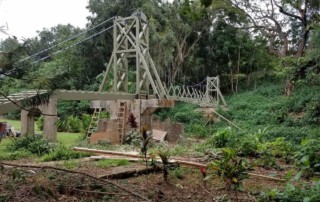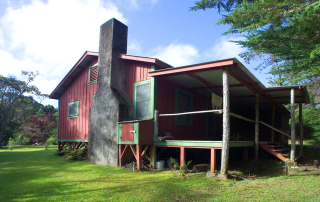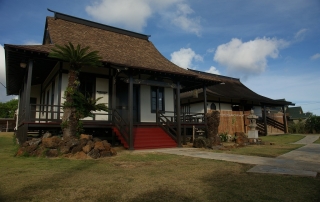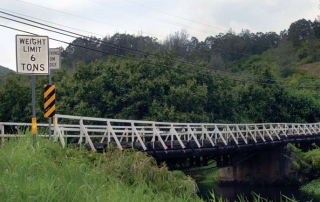Kapaia Swinging Bridge (2011) SAVED
UPDATE: 2018 – Reconstruction Underway The Kapaia Foundation’s March Newsletter shared an inspiring update on the status of Kapaia Swinging Bridge’s reconstruction! "HD Construction, with the guidance of architect Ron Agor, has been busy working on rebuilding the Kapaia Swinging Bridge since last September. Contractor Harry Duronslet and his team are following the 1948 plan, using as much of the existing material as possible. The finished structure will look like the original but will last longer because it is being built stronger. If all goes as planned, the bridge rebuild project should be completed before May 2018." UPDATE: 2017 – SAVED After more than a decade of neglect, Kapaia Swinging Bridge is on its way to being restored. In March of 2017, Kaua’i County transferred appropriated funds and ownership of the bridge to Kapaia Foundation. Kapaia Foundation, formed in 2006 to seek protection of the bridge, was awarded a $231,000 grant to cover supplies and equipment to restore the bridge. Kapaia Foundation is galvanizing the community for the additional support and services needed. Photos: courtesy of Kicka Witte; Kapaia Foundation “Maintenance neglect and resistance from county leaders created the dilemma we have struggled with for the past five years.” – Laraine Moriguchi UPDATE: 2012 – CONTINUED THREAT Article Written By: Kathryn Drury Wagner In last year’s “Most Endangered Places,” we covered the Kapaia Swinging Bridge, a wooden suspension bridge constructed in 1948. A vestige of the plantation culture in the Islands, in 2006, It was deemed unsafe and closed by the county. Things had been looking up: the county was planning to restore the bridge’s two towers, and a community group, Save Kapaia Swinging Bridge, was raising the funds for the rest of the renovation. [...]






